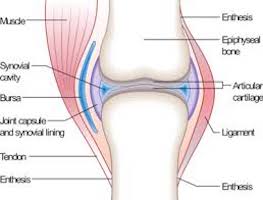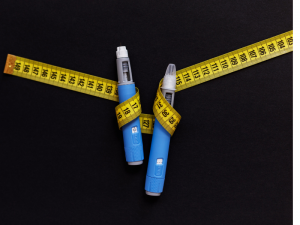Do your shoulders creak? Knees pop? Does your neck crack? Or maybe you hear clicking noises in your ankles, wrists, or hips when you move? Joints can produce an impressive range of sounds—some weird, some wonderful, and occasionally, quite loud!
As an osteopath and Pilates teacher, the question I often hear is: What do these joint noises mean? Are they a sign of wear and tear, arthritis, or something more serious? Or are they just another sign of the “kisses of time” and the natural aging process? Should you seek advice about those strange snaps, pops, or crunches, or are noisy joints best ignored?
Here’s the inside scoop:
Joints can produce a variety of sounds—popping, cracking, grinding, and snapping—for several different reasons. The medical term for these noises is crepitus. While most of these sounds are likely harmless, crepitus can sometimes indicate damaged cartilage or inflammation.
Is crepitus dangerous?
It depends! (I know, classic osteopathic answer!) If there are no other symptoms, you can likely stop worrying about your noisy joints. However, if you experience discomfort or pain, it’s always best to consult your GP or a healthcare professional, such as an osteopath or physiotherapist.
Common causes of crepitus:
-
Escaping gases
Synovial fluid in your joints contains oxygen, nitrogen, and carbon dioxide. When a joint moves, the capsule stretches, causing a rapid release of these gases, resulting in that characteristic crack or pop. These are often harmless and known as “benign pops” or “high-pitched snaps.” They usually occur when the joint’s volume changes sudd
enly—think of cracking your knuckles or the sound of popping ankles while running. The gases need a bit of time to return to the synovial fluid before the noise can happen again.
-
Muscle tightness
Muscle tension, especially in the neck, can contribute to joint sounds. When you turn your neck, for example, the muscles may cause resistance, creating a buildup of pressure in the joint. When the joint finally moves, it may produce a sound similar to that of popping knees or ankles—and it might seem much louder because it’s closer to your ears! -
Tendons rubbing
As joints move, tendons can shift position. If a tendon moves slightly out of alignment, it can snap back into place, creating a sound like an elastic band flicking over a joint. -
Ligaments tightening
As we move, ligaments—especially in the knee and ankle—can tighten, producing a cracking sound. If the tendon becomes inflamed due to repetitive movement, this can lead to discomfort or pain before the noise occurs. -
Roughened joint surfaces
Over time, cartilage—the smooth surface that covers the ends of bones—can wear away, causing bones to rub against a rough, frayed surface. This is most common in osteoarthritis.
What can you do about osteoarthritis?
Osteoarthritis is influenced largely by genetics, so while you can’t entirely prevent it, there are ways to slow the process and limit cartilage deterioration.
Here are some helpful strategies:
- Stay active. Cartilage relies on movement to “pump” blood and nutrients around the joint.
- Minimise high-impact activities that could speed up cartilage deterioration.
- Seek physical therapy (osteopathy, physiotherapy, or clinical Pilates) to correct muscle imbalances, improve joint alignment, and enhance mobility.
- Exercise regularly to reduce stiffness and strengthen muscles that support your joints.
- Maintain a healthy weight. Even losing a few pounds can significantly reduce stress on weight-bearing joints like the knees.
- Eat foods rich in omega-3s (like fatty fish, flaxseeds, and walnuts). These have anti-inflammatory properties that may help slow the progression of osteoarthritis.
Can Pilates help?
Absolutely! Pilates focuses on precise movement, joint alignment, and muscle co
ntrol, all of which reduce stress on affected joints. Several studies have shown Pilates can help improve joint stability and reduce pain. So, yes, it’s a great addition to your joint care routine!
When should you seek help?If crepitus is causing severe pain, it’s worth consulting a healthcare professional for further assessment. In rare cases, it could indicate a fracture, where broken bone fragments rub together and create noise.
Should I ask for an X-ray or MRI scan?
Interestingly, the severity of cartilage degeneration doesn’t always correlate with pain. Some people with severe damage on imaging have little to no symptoms, while others with minimal signs on a scan exp
erience significant pain.
This discrepancy may be due to how pain signals are processed in the brain, but more research is needed in this area.
Are you in pain or feeling concerned?
- Speak to your GP or pharmacist about over-the-counter anti-inflammatory medications or topical gels.
- Use cold packs to help reduce inflammation and promote healing.
- Modify aggravating activities rather than completely resting—movement is key to recovery!
- Consider physical therapy (osteopathy, physiotherapy, clinical Pilates, or chiropractic) to improve joint alignment, correct muscle imbalances, and enhance stability.
Trivia!
Which joint produces the loudest sound?
The Achilles tendon rupture. When it snaps, it can sound like gunfire due to the tremendous tension under which it’s placed. And yes, it’s incredibly painful!
Final thoughtsIf your joints are noisy and painful, it’s more likely to indicate a problem, especially in younger people. If you’re in doubt, it’s always worth checking in with a healthcare professional.
For the rest of us, a little crepitus here and there is likely just another sign of the “kisses of time.”
PS – Are you a knuckle cracker?
If you or a loved one habitually cracks their knuckles, you may have heard conflicting advice. Some studies show no link between knuckle cracking and joint damage. However, there is some evidence that repetitive cracking could weaken the surrounding soft tissue, affecting things like fine motor control (like buttoning a shirt) and potentially causing swelling in the hands or fingers.
There’s no evidence that knuckle cracking causes arthritis, but let’s be honest—it’s probably not the most attractive habit!
Please note: This article is for guidance only and should not be regarded as a substitute for medical advice, diagnosis, or treatment from a qualified healthcare professional.







